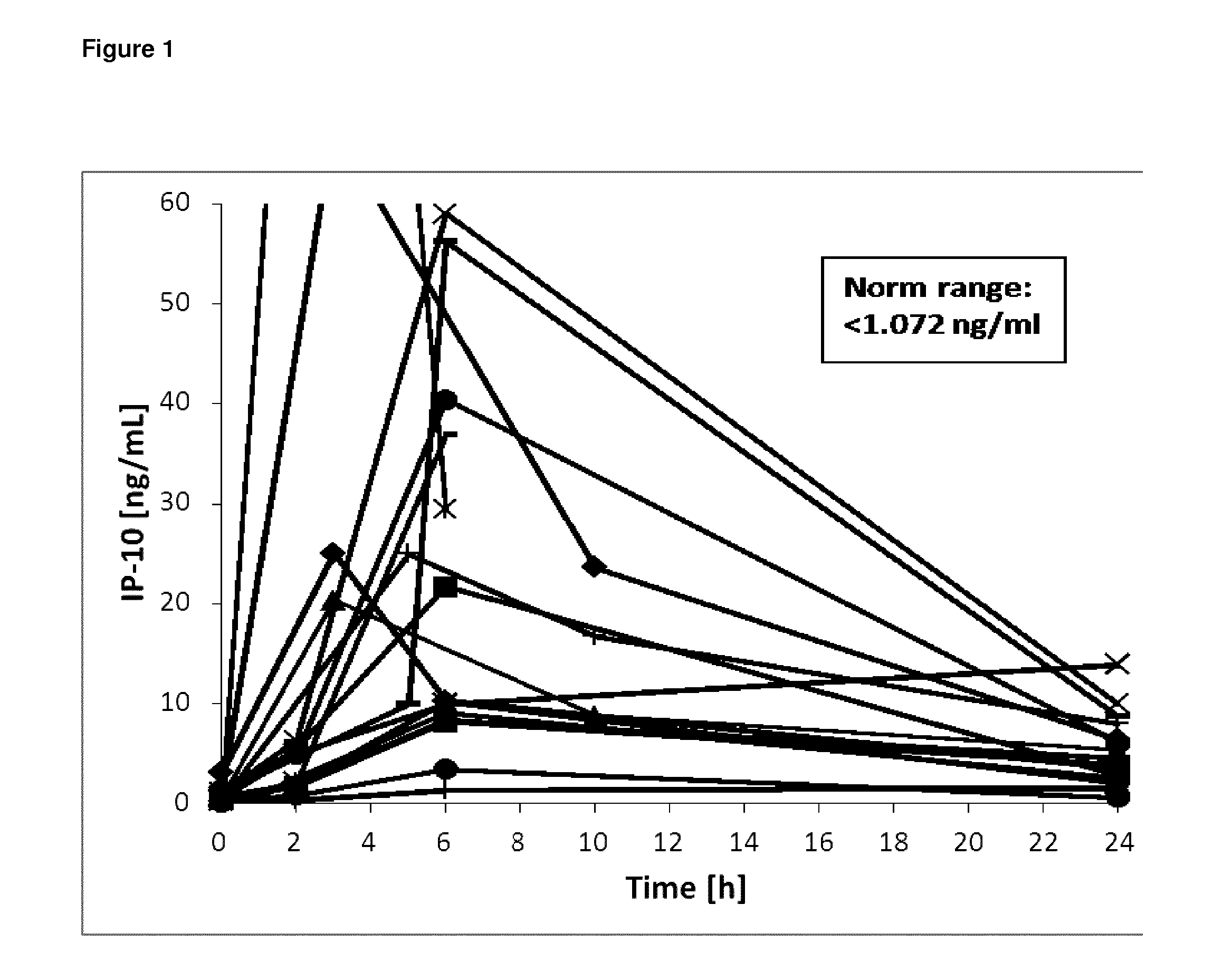However, therapeutic results obtained by
antibody therapy of cancer patients are highly variable.
A significant percentage of the therapies using anti-cancer antibodies shows no or only a small alleviation of the
disease and sometimes are limited to specific patient groups.
However, metastatic
renal cell carcinoma presents a special challenge to oncologists, as about 70% of the patients develop metastases during the course of their
disease.
The use of non-specific cytokines has so far been shown to be ineffective.
Trials of cancer vaccines, radiotherapy,
chemotherapy,
immunotherapy, or biologic therapies have been met with little success, even if they were based on promising
in vitro data.
However, the treatment was associated with a very
high incidence of adverse
skin reactions.
Furthermore, panitumumab is an IgG2
antibody which is not capable of inducing ADCC in the patient.
A general observation with all anti-EGFR antibodies such as
cetuximab and also other
EGFR inhibitors is that they frequently cause adverse
skin reactions.
These
skin rashes are accompanied by pustules,
itching, swelling and often pain and in severe cases may be associated with ulcerations, infections and even
necrosis of skin areas.
However, such clinical benefit rates were often only achieved with patients that received their first regular chemotherapeutic treatment.
Patients also withdrew from the study because of adverse skin reactions.
However, these commonly occurring skin reactions are highly problematic for EGFR inhibitor treatments for several different aspects.
For one, cancer patients who are treated with the EGFR inhibitor are commonly already in a rather poor
general health condition and the adverse skin reactions further deteriorate the patient's status which thereby becomes even more critical.
Therefore, these patients can hardly tolerate the further burden of the adverse skin reactions caused by conventional EGFR inhibitor therapy or the burden of additional medication to treat the skin reactions.
Furthermore, if the skin reactions develop into a severe form, they may be accompanied by skin
necrosis or
secondary infections which may readily become troublesome or even life-threatening for cancer patients.
But also for patients with a better
general health status the adverse skin reactions may become a serious complication also due to their tremendous negative effect on the psychological level.
EGFR inhibitor induced skin
rash often affects the upper
body area including the face and hence, cannot be hidden.
For many patients even less severe adverse skin reactions may develop into an unbearable psychological burden and can result in
discontinuation of treatment.
Moreover, up to date there is no general means for treatment or prevention of these adverse skin reactions (see Li, T. and Perez-Soler, R.
However, in case of a treatment interruption or termination the cancer is no longer treated and further
tumor progression and metastatic spread may thus well be a direct result of the adverse skin reactions in particular in patients with no other
treatment options.
Similar problems may occur during a
dose reduction as the
efficacy can be reduced.
However, this procedure is very painful and poses the risk of complications such as
secondary infections or hypotension.
Furthermore,
effusion drainage only targets the symptoms and has to be repeated frequently which increases the pain and complication risk and is very cumbersome for the patient.
Primary tumors or metastases affecting the membrane (mesothelium) lining the
body cavity may, for example, result in uncontrolled
fluid input and / or a disturbed
fluid output.
However, in principle any cancer can result in malignant
effusion due to metastatic spread which may also affect the respective mesothelium.
Besides the pain and burden directly caused by the
effusion, it also greatly adversely affects the
quality of life of the patients due to a resulting immobility, the effort for drainage of the effusion and the pain resulting therefrom.
However, since malignant effusions often develop in patients with advanced or even
terminal cancer, standard cancer therapies in many cases do not have an effect on the effusion.
However, this leads to a further therapy—in addition to the
cancer treatment—which is commonly associated with further adverse side effects and significantly adds to the burden for the cancer patient.
 Login to View More
Login to View More 


